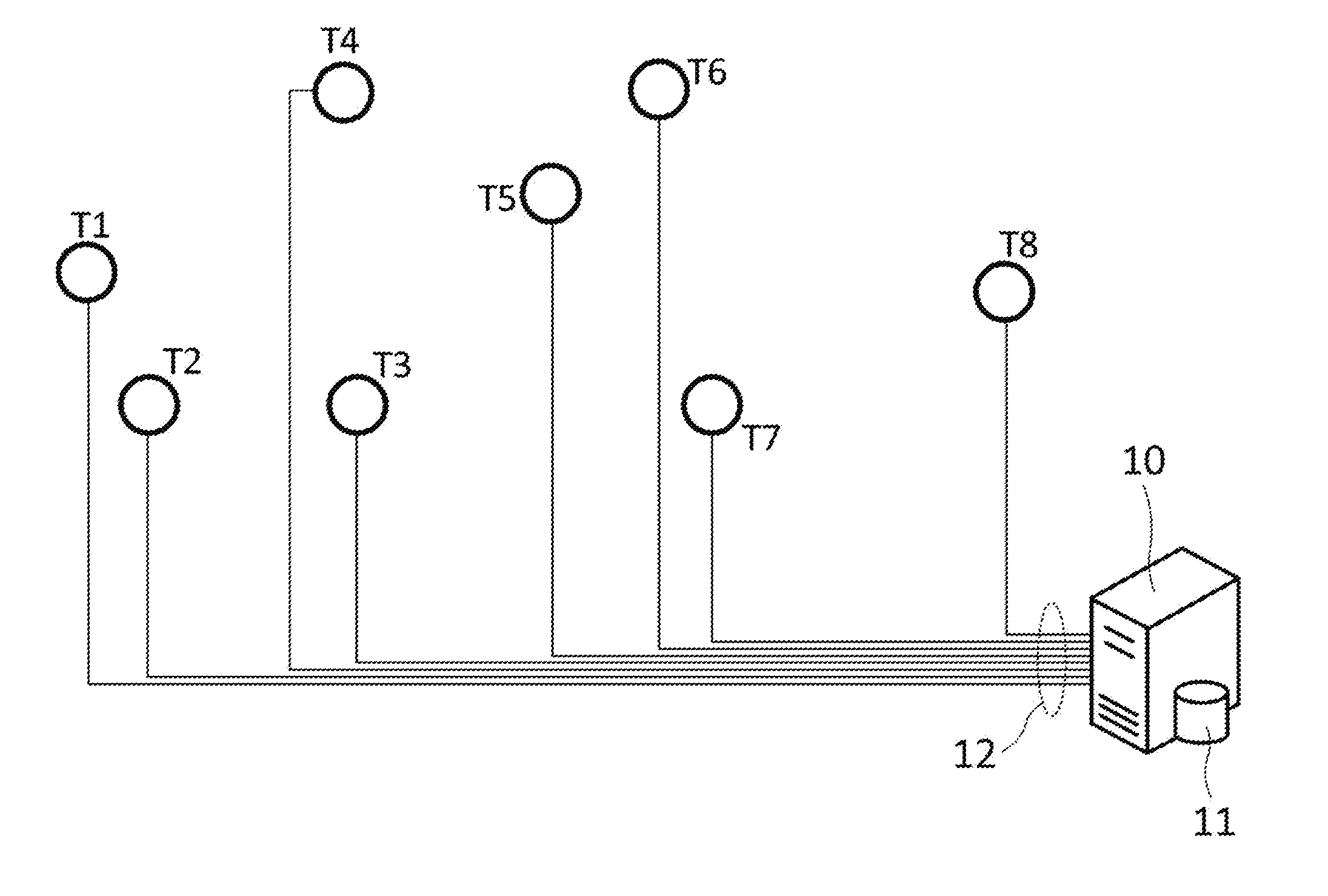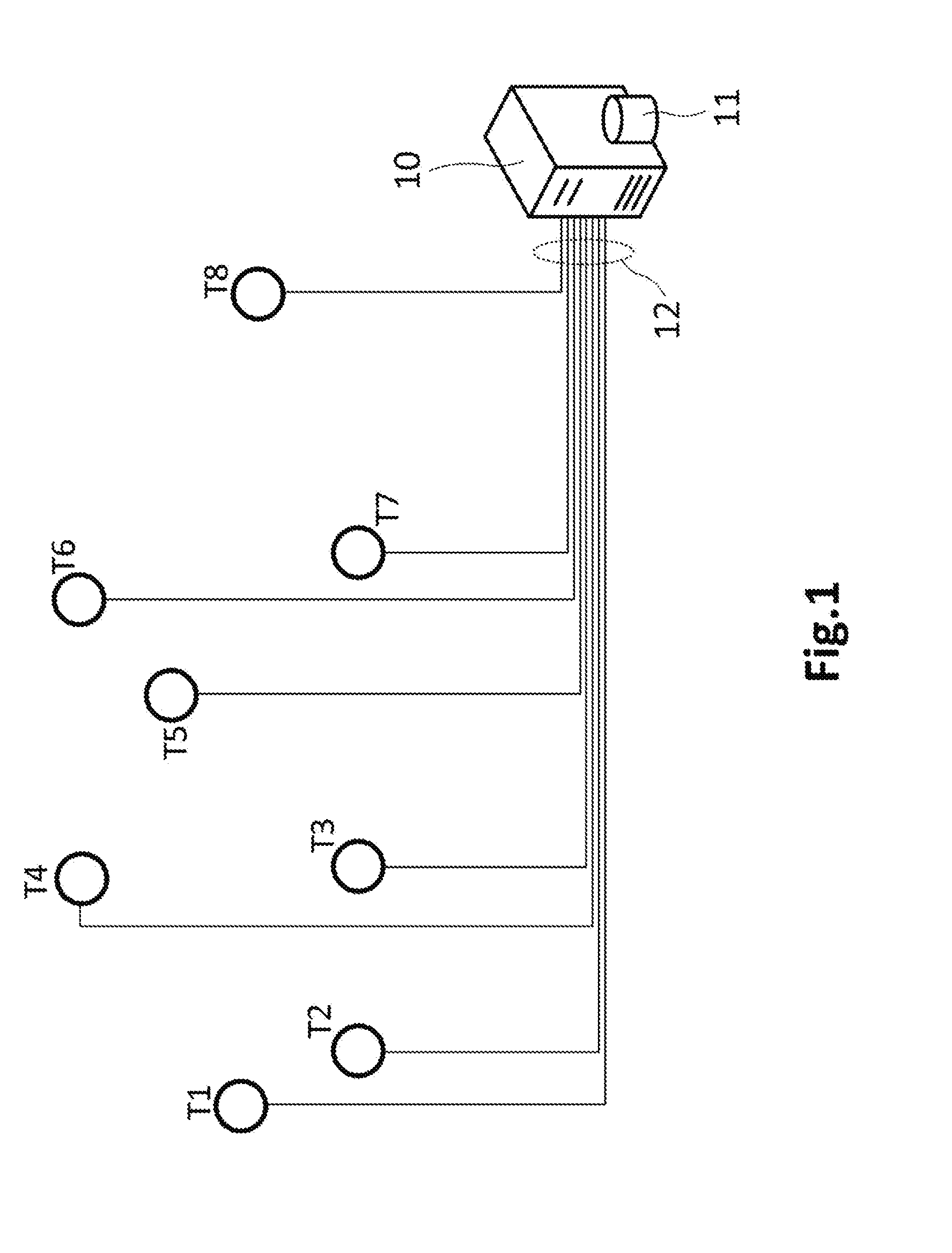Operating wind turbines
a wind turbine and wind power technology, applied in adaptive control, process and machine control, instruments, etc., can solve the problems of reducing the life and/or the performance reducing the electrical power production of the wind turbine, and reducing the life of the wind turbine. , to achieve the effect of reliable measurement, reliable parameter value and optimal operation of the wind turbin
- Summary
- Abstract
- Description
- Claims
- Application Information
AI Technical Summary
Benefits of technology
Problems solved by technology
Method used
Image
Examples
Embodiment Construction
[0031]FIG. 1 is a schematic representation of a wind farm according to an example. This wind farm may include a plurality of wind turbines T1-T8, which are conceptually represented in the figure as circles. Each or some of these wind turbines may have different types of sensors (not shown) such as e.g. load sensors, LIDARs, yaw sensors, etc. The wind farm may also include an example of a control system 10 for operating all or part of the wind turbines T1-T8 as a whole. The wind turbines T1-T8 may be theoretically distributed within the wind farm according to a theoretical layout. In some examples, a met pole may be included in the wind park for measuring wind and ambient conditions (e.g. temperature, wind direction, turbulence, wind speed, humidity etc.).
[0032]The control system 10 may be connected 12 with the wind turbines T1-T8, such that the control system 10 may receive measurements (e.g. load measurements, wind measurements, yaw measurements, etc.) from sensors associated with ...
PUM
 Login to View More
Login to View More Abstract
Description
Claims
Application Information
 Login to View More
Login to View More - R&D
- Intellectual Property
- Life Sciences
- Materials
- Tech Scout
- Unparalleled Data Quality
- Higher Quality Content
- 60% Fewer Hallucinations
Browse by: Latest US Patents, China's latest patents, Technical Efficacy Thesaurus, Application Domain, Technology Topic, Popular Technical Reports.
© 2025 PatSnap. All rights reserved.Legal|Privacy policy|Modern Slavery Act Transparency Statement|Sitemap|About US| Contact US: help@patsnap.com



